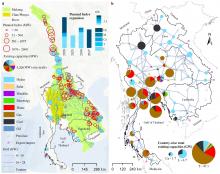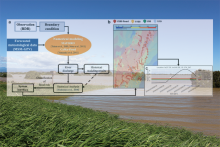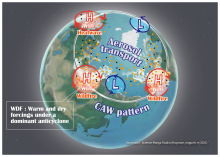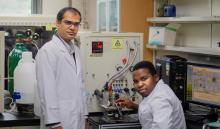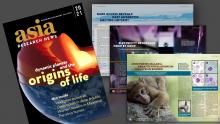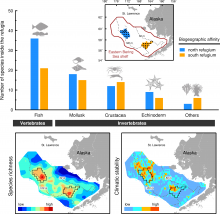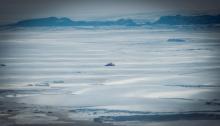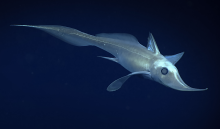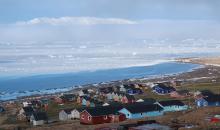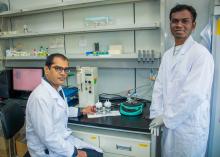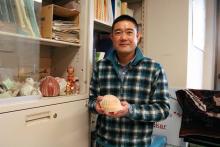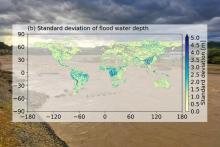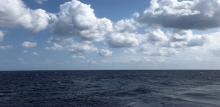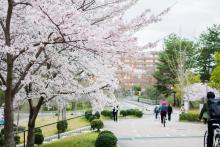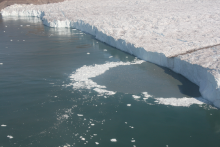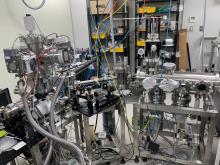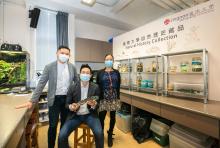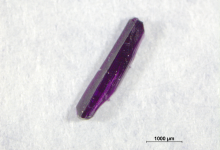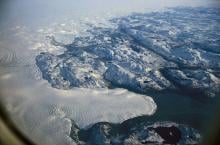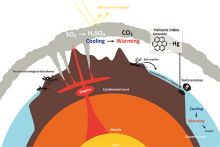Climate Change
News
18 Jul 2021
Using a CeO2 catalyst, researchers develop an effective catalytic process for the direct synthesis of polycarbonate diols without the need for dehydrating agents. The high yield, high selective process has CO2 blown at atmospheric pressure to evaporate excess water by-product allowing for a catalytic process that can be used with any substrate with a boiling point higher than water.
12 Jul 2021
Scientists in Singapore are calling for revisions in planned hydropower expansions in light of the rapidly decreasing cost of solar photovoltaic systems
05 Jul 2021
A team of leading climate social scientists, including a chair professor at The Education University of Hong Kong (EdUHK), argues that influential studies that attempt to quantify different countries’ “fair shares” of climate action have put forward a biased and oversimplified view of what is primarily a political and ethical discussion.
01 Jul 2021
Scientists show that an ocean-bottom seismometer deployed close to the calving front of a glacier in Greenland can detect continuous seismic radiation from a glacier sliding, reminiscent of a slow earthquake.
18 Jun 2021
Researchers from The University of Tokyo Institute of Industrial Science develop a flood forecasting system that could help protect people and property during typhoons
04 Jun 2021
Coral insights into 1,000 years of seasonal changes in the Arabian Sea warn of significant impacts caused by global warming.
03 Jun 2021
Research Covers Humans’ Historical Adaptation to Climate Change
02 Jun 2021
Scientists have uncovered a summertime climate pattern in and around the Arctic that could drive co-occurrences of European heatwaves and large-scale wildfires with air pollution over Siberia and subpolar North America.
25 May 2021
Scientists develop degradation-mitigating additives that vastly extend the lifespan of Nafion-based fuel cells
20 May 2021
The UK’s COP26 Universities Network and leading research centres in Singapore have announced a partnership to develop four reports that provide policy recommendations for climate action in the ASEAN region.
18 May 2021
The Asia Research News magazine brings you fascinating research stories from diverse voices in environment, technology, materials, medicine, space and social sciences. The 2021 edition is out now.
17 May 2021
Scientists from Hokkaido University have used species survey and climate data to identify two marine biodiversity refugia in the Eastern Bering Sea – regions where species richness, community stability and climate stability are high.
10 May 2021
Ice is melting at a surprisingly fast rate underneath Shirase Glacier Tongue in East Antarctica due to the continuing influx of warm seawater into the Lützow-Holm Bay.
10 May 2021
Deep sea animals face greater risks compared to those nearer the surface as they become less able to maintain their preferred thermal habitats with climate change.
13 Apr 2021
Hokkaido University researchers have clarified different causes of past glacial river floods in the far north of Greenland, and what it means for the region’s residents as the climate changes.
13 Apr 2021
Scientists develop high performing electrocatalyst to synthesize ammonia in an effort to replace conventional eco-unfriendly methods
05 Apr 2021
“The earth is suffering from several ‘diseases’: global warming, ocean acidification, habitat loss, etc. If any of these diseases remains uncured, other diseases will accelerate and cause new ones to appear, hence putting humanity’s well-being in danger,” said Associate Professor Masahiko Fujii. For this reason, the research staff of the Faculty of Environmental Earth Science keeps on assessing the current global environmental issues and promoting renewable energy sources as a possible solution.
31 Mar 2021
Researchers from the Institute of Industrial Science, The University of Tokyo calculate sources of uncertainty in flood risks to improve global flood predictions
31 Mar 2021
Tokyo summers are notorious for their sweltering heat and humidity. Scientists have found that the meandering Kuroshio Current may be the cause of increasing hot and humid summers in the Kanto region.
30 Mar 2021
The younger generations are willing to put their money where their mouth is when it comes to sustainable living. In a study questioning both commitment to sustainable behaviors and willingness to trade better pay to work for a more sustainable-minded company, the surveyed young adults in Japan made their preferences clear.
25 Mar 2021
For the first time, scientists have succeeded in continuous monitoring of a subglacial discharge plume, providing a deeper understanding of the glacier-fjord environment.

24 Feb 2021
Springer Nature and the University of Tokyo to hold SDGs Symposium 2021, “Interdisciplinary science solutions for food, water, climate and ecosystems Sustainable Development Goals”
03 Feb 2021
Hokkaido University scientists show that under laboratory conditions, ultraviolet light reacts with nitrophenol to produce smog-generating nitrous acid.

02 Feb 2021
Carbon dioxide (CO2) is one of the major greenhouse gases causing global warming. If the carbon dioxide could be converted into energy, it would be killing two birds with one stone in addressing the environmental issues. A joint research team led by City University of Hong Kong (CityU) has developed a new photocatalyst which can produce methane fuel (CH4) selectively and effectively from carbon dioxide using sunlight. According to their research, the quantity of methane produced was almost doubled in the first 8 hours of the reaction process.
02 Feb 2021
It’s not only climate change impacting bird reproduction.
21 Jan 2021
Lingnan University in Hong Kong (LU) has recently established a publicly accessible Natural History Collection (the Collection) of specimens of local amphibians and reptiles to document Hong Kong’s biodiversity, and for research, conservation and education purposes.
25 Nov 2020
A team of scientists has succeeded in visualizing how carbon dioxide (CO2) behaves in an ionic liquid that selectively absorbs CO2. The finding is expected to help develop more efficient methods to capture CO2 in the atmosphere, one of the major factors causing global warming.
20 Nov 2020
A research team, affiliated with South Korea's Ulsan National Institute of Science and Technology (UNIST) has succeeded in unveiling the principle behind the changing sleep patterns, according to the ambient temperature, through the use of Drosophila as a model of sleep.
12 Nov 2020
Computational models suggest that melting water originating in the deep interior of Greenland could flow the entire length of a subglacial valley and exit at Petermann Fjord, along the northern coast of the island. Updating ice sheet models with this open valley could provide additional insight for future climate change predictions.
10 Nov 2020
Researchers in Japan, the US and China say they have found more concrete evidence of the volcanic cause of the largest mass extinction of life. Their research looked at two discrete eruption events: one that was previously unknown to researchers, and the other that resulted in large swaths of terrestrial and marine life going extinct.
Events
Sorry, no events coming up for this topic.
Researchers
Sorry, no researchers coming up for this topic.
Giants in history
Edgardo Dizon Gomez (7 November 1938 – 1 December 2019) was a Filipino marine biologist who recognized the need to protect marine resources, especially coral reefs, in the Philippines.
Anna Mani (23 August 1918 – 16 August 2001) was an Indian meteorologist who contributed significantly to the understanding of solar radiation, ozone and wind energy by developing a wide range of measurement tools. One of India’s pioneering female scientists, Mani excelled in the male-dominated area of meteorology and became the Deputy Director-General of the India Meteorological Department.
Japanese geochemist Katsuko Saruhashi developed the first method and tools for measuring carbon dioxide in seawater



